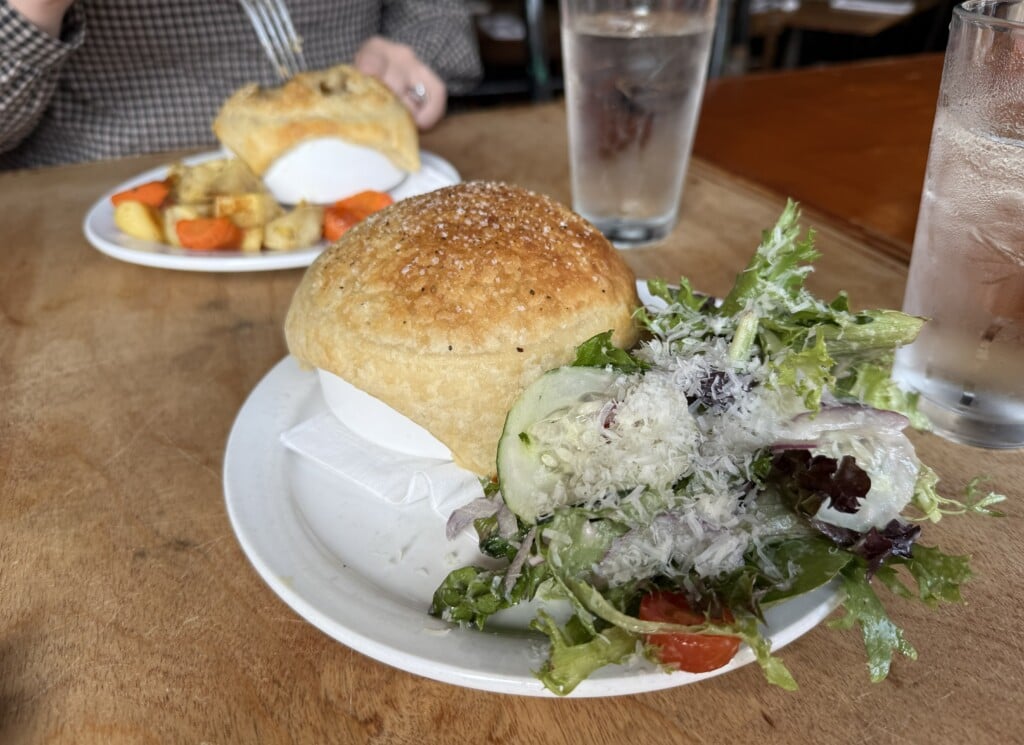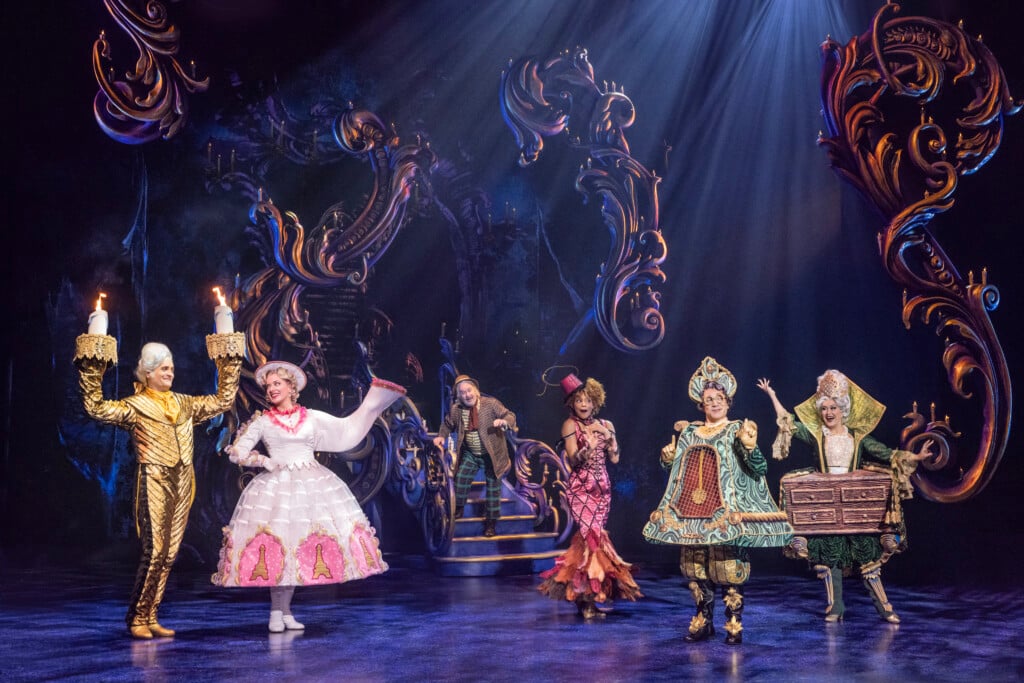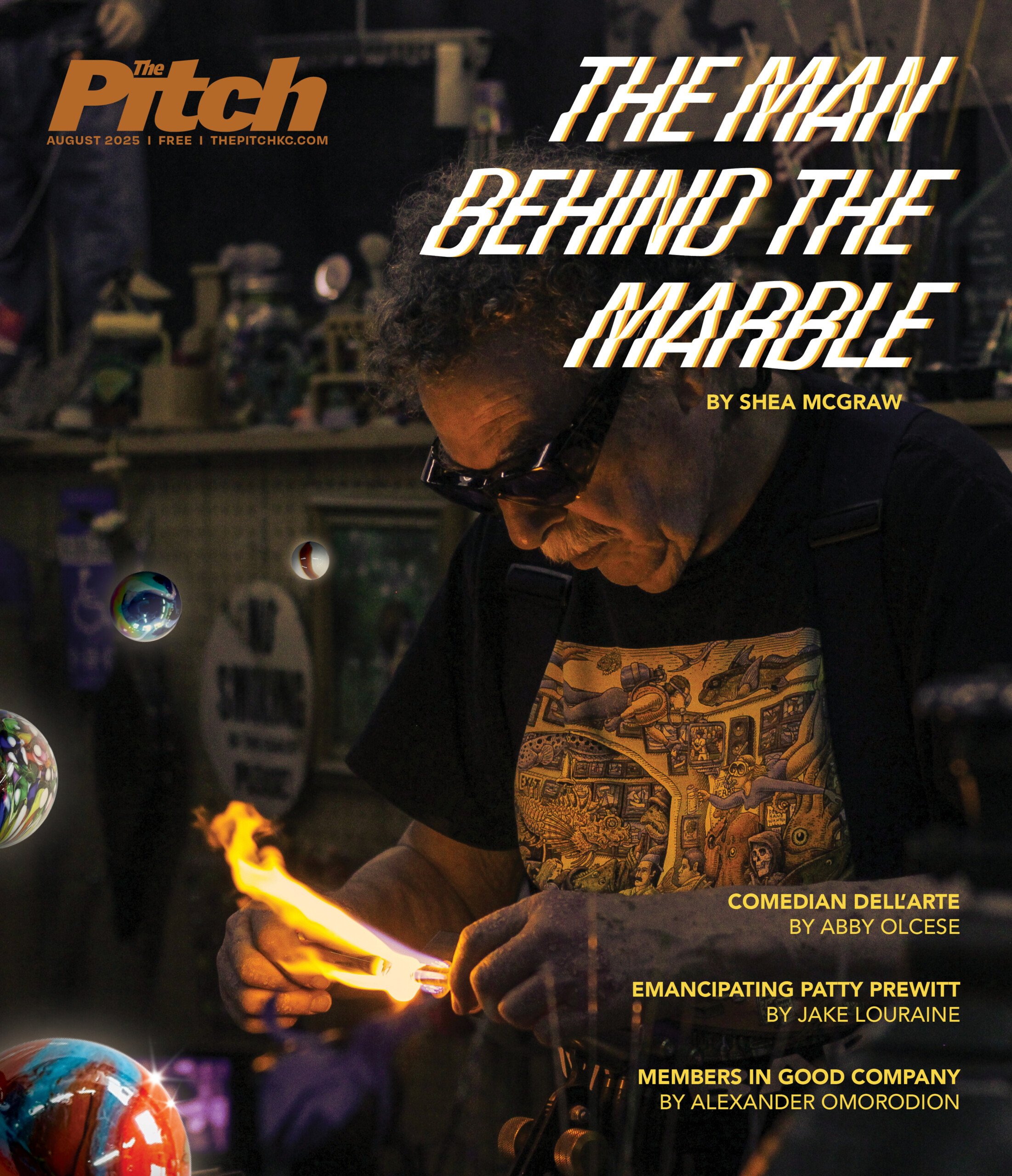Shadow Boxing
In and around Barbara McCreery‘s Volker neighborhood home, there is a use, or at least a place, for everything. Items that previously made their homes in dumpsters or abandoned lots find new life decorating the expansive yard overlooking downtown. Headless statues stand guard along a path made of salvaged manhole covers. Old bodybuilding weights and upturned glass bottles create borders for gardens lying in wait for spring.
The reclamation continues in the interior of McCreery’s cottagelike home, which feels like a quirky antique store minus the price tags. Countless objects compete for attention. Windows are lined with aged medicine bottles. An armadillo basket — the dead critter’s tail forms a handle for the hollowed-out shell — sits atop an old cabinet. Below, a humorous scene depicted in a colorful shadow box helps to explain the look and feel of McCreery’s home and garden. When she’s not working as a landscape designer, McCreery makes what she calls “dimensional cartoons” or “cartoon dioramas.”
In the diorama, a man’s upper half emerges from an overflowing dumpster, looking victorious. To the right, several judges hold placards with the number 10. To the left, a jubilant crowd gathers to cheer him on. McCreery calls this shadow box “The Perfect Dive.”
“My boyfriend, Oscar, has a passion for dumpster-diving,” McCreery says. (A seemingly ancient toy tire that Oscar discovered on a recovery foray is incorporated into the piece as part of the miniature dumpster.)
Most of McCreery’s boxes tell a personal story or employ a visual pun. Above her worktable, “The Suicide of Art Gum” recalls an experience McCreery had while landscaping for an architect. In the diorama, art supplies come together to form the body of an architect. Checkered Uniball pens work as plaid pants. His torso is made out of art gum erasers, pencils stick out of pencil sharpeners for arms, and the head is made of glued-together pencil shavings. Shiny plastic gems resemble dots of blue blood. Yes, blood — Art Gum the architect has impaled himself on an X-Acto knife. Gum’s pencil arm holds a blackened match; he was trying to burn his blueprints on his way out.
Disturbed by one client’s unwillingness to experiment, McCreery decided to make a piece in which an architect commits suicide. “That’s all based on the creative frustrations that people like architects, interior designers and landscape designers must feel when their clients, you know, really inhibit them, stifle them,” she says.
That box’s subject is dark, but most of McCreery’s work is whimsical, even if the materials are dead animals. In “The Discovery of Muttankhamun,” a chest of drawers is the tomb of a mummified poodle that Oscar found under the crawl space of an abandoned home. Spray-painted Styrofoam blocks form a pyramid’s entrance. Gold- and bronze-leaf Milk Bones and kibble litter the tomb, treasures to aid the dog in the afterlife. A bowl of silica gel sits out to ensure that the tomb stays dry. In the middle lies what was once a 25-pound poodle mix, its dried-out carcass now free of fur and riddled with holes.
“It seems to freak people out when I tell them I have a dead dog,” McCreery says, stopping short of admitting that it is kind of weird. “But I just thought it was fascinating.”




